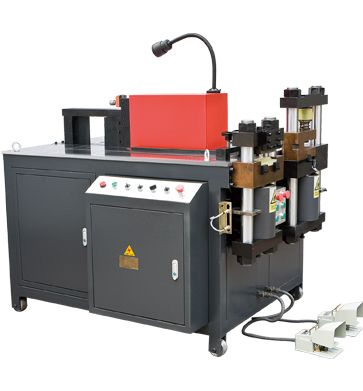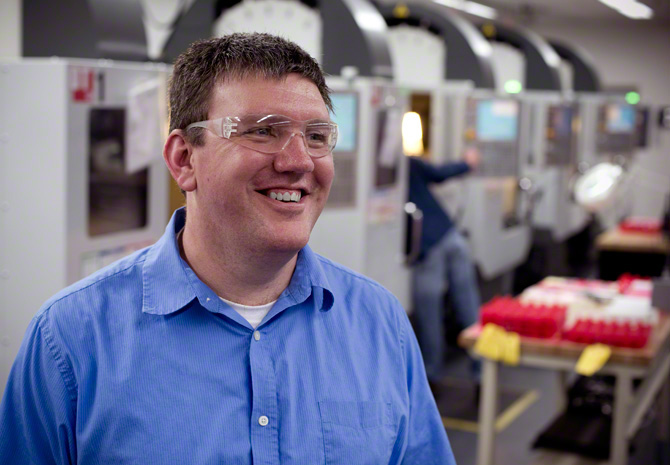News
A Spine for Investment
 admin. - 2015-12-04 14:15 -–
A Spine for Investment cnc busbar machine admin. - 2015-12-04 14:15 -–
A Spine for Investment cnc busbar machine
Peter Wong surprises me when he tells me that, when Tecomet, his employer, decided it wanted a piece of the $20 billion/year spinal implant industry,
it hadn’t yet decided what components it would make, or how it would make them. I’m even more surprised when he confides that not knowing didn’t
stop him from buying seven busbar punching machine DT-1 Drill/Tap machines for his planned spinal cell. But Tecomet isn’t known for rash or ill-
considered decisions.

Tecomet is a manufacturing and medical technology firm with a 40-year history of supplying some big-name customers. The company excels in netshape
forging, photochemical etching, precision machining, and metal joining of critical components and complex assemblies for the medical implant,
aerospace, defense, and specialty commercial and industrial markets. The company was the first to develop powdered-metal coating on a cardiovascular
implant; to manufacture a near-net-shape orthopedic forging; to forge a zirconium femoral implant (Mr. Wong shows me the first finished part, encased
in a Perspex block like a fossilized remain of a bygone epoch); and the first to fabricate a hightransmission collimator for x-ray mammography. Mr.
Wong’s attitude to a new market opportunity wasn’t cavalier, and he wasn’t being impetuous with company money.
“The spinal implant market isn’t so different to medical markets we already know well,” he says. “We felt that if we invested in the right people
and technology, and if we applied the same manufacturing principles and quality standards, we’d find the right parts to make, and the customers to buy
them. We’ve always stuck more or less to what we know.”
In the beginning, it was strictly forging, but over the years, the company has pushed into new areas of machining and manufacturing technology. “We
don’t grow randomly, as some companies do,” says Mr. Wong. “We have a five-year strategy, so we know where we are heading.”
Tecomet occupies two facilities, both with about 40,000 square feet of purpose-built manufacturing space, and both conveniently located less than 30
minutes from Boston, Massachusetts. The company headquarters are located in Wilmington, MA, as is the forging operation, while its Woburn, MA, location
serves as the home of Tecomet’s etching and precision technologies group, with its multitude of machining and joining capabilities. Wilmington is
almost entirely dedicated to medical. Woburn is approximately 50/50 medical and aerospace.
“We’ve found over the years that medical cnc busbar punching machine and aerospace make a good business combination,” continues Mr. Wong. “For one reason or another, when
medical is growing, aerospace seems to be static or shrinking, and vice versa.
“Why does medical sometimes flatten out?” he asks. “You’d think that with a growing and aging population, the market would be expanding
continuously, but OEMs react to inventory levels just like in any other sector. When they launch a product, they buy way too much up front. We know the
patterns, and we take a long-term view and formulate our strategy accordingly. We have a small customer base, which might appear to be dangerous, but
we don’t want to sell to everyone. We only want customers that align with our strategy.” The company’s biggest customer is Smith and Nephew. “I’m
proud to say,” Mr. Wong adds, “that in 12 years, we have never missed a delivery, which has helped our reputation no end.”
The Wilmington facility is where the company built its new spinal-implant manufacturing cell, created in 2010. Originally, this part of the factory was
where the company did its bench work. Now, after extensive refurbishment, it’s home to a line of seven cnc bus bar machine DT-1 Drill/Tap machines.
John Kaminski is a Tecomet manufacturing engineer, and is responsible for the new setup. Tecomet bought the busbar cutting machines a couple of months
before he joined the company, then hired him to come on board and begin programming the parts and getting the new cell operational.
“All of the machines are set up in the same manner,” he says. “We have a busbar punching 5-axis table on one side, and a vise on the other side to
do the secondary ops. This arrangement allows the operator to have throughput of the product without having a major setup from one part to the next.
All the programs get punched into the machine, and the tooling is already in the carousel, so going from one product to another is a very simple
change. It’s as simple as calling up the program, and then pushing the button. That’s it, you’re up and running. Even if a customer calls us and
says, ‘I need a particular part right away,’ I can transition on the fly, and just tell the operator to call in the program and get those parts out
to the customer. It works out very well for us.”
Although Mr. Kaminski talks with obvious enthusiasm for the busbar punching cutting bending machines, he’s also candid about his first thoughts, when
he learned that the company had invested in the DT-1s. “This is a small space,” he says, “so small-footprint machines were essential. Also, in the
early days, we weren’t 100 percent sure what the product would be, so we wanted something with inherent flexibility. At first, I was a little
skeptical about the cnc bus bar machines. Looking at the cost, I didn’t feel they would be a long-term solution for the department. But I was wrong,
and I’m sold on them now. They’re doing a good job; the repeatability is there, and we haven’t had any issues.
“We also don’t need to have an operator in front of every machine,” he adds. “It’s an easy group to manage, so there’s one guy running the seven
– and we have two more machines on order.”
The parts the company eventually came to make are implants machined from solid titanium. As is normal in the medical implant sector, Mr. Kaminski is
reluctant to divulge specifics, for fear of compromising customer confidentiality. “What I can tell you, though, is that the biggest challenge in
manufacturing these parts is the need to blend complex surface geometry – machined with multiple tools, approached from several attitudes. It’s
crucial to have the parts come off the machine with minimal bench work required to achieve the desired surface finish. We use a combination of 3+2 axes
positioning, and 4+1 axis simultaneous machining to produce these parts. The copper busbar machines, as we currently have them configured, are very
accurate. The operators in many cases have machined entire batches of parts with minimal offsetting required.”
Asked about the decision to buy the cnc DT-1 machines before knowing exactly what parts would be machined, Mr. Kaminski enthuses about their inherent
versatility, and the ways in which they have been customized to meet specific needs. “To be honest, we initially selected the DT-1 machines because of
the value they provide; the price point was right. Subsequently, we were able to add the cnc TR160Y table to give us full 5-axis capability at a very
reasonable price. This particular table was selected because of its compact footprint and rigidity. We also added probing, which has proved to be a
very valuable asset, as well.”
People often assume that, in business, the opportunity comes before the action. That’s not always the case, as Peter Wong knows. He invested in seven
cnc DT-1 machines before he knew how he was going to use them. A few months later, Tecomet has a new state-of-the-art machining department, and a
thriving spinal implant business unit.

BMC MX602K-7C
Main Function:
To cut/punch(all kingds of round/square/special holes and slot type)/chamfer/emboss the copper/
aluminum busbar ect. |
|

Corporate Overview Video
BMC has passed ISO certification、 CE certification and
many kinds of patents on technology and appearance. This video gives an overview to the advanced engineering, machining, and assembly teams behind these machines. |
|

Corporate Brochure
20-page brochure gives an overview of Busbar Machinery Corporation. Learn about the BMC punching cutting bending machines, BMC's history, the corporate culture, and the people who make the products. |
If you have trouble viewing these videos please email to Donna donna@busbarmc.com.
To learn more
about BMC's fast, productive, punching & cutting & bending CNC
busbar machines, contact Leanne Lee, International Sales Manager
at leanne@busbarmc.com. |
 admin. - 2015-12-04 14:15 -–
A Spine for Investment
admin. - 2015-12-04 14:15 -–
A Spine for Investment 


